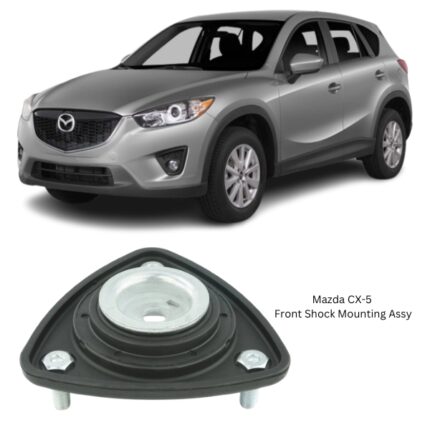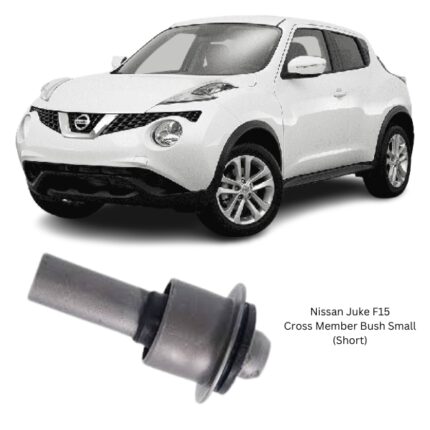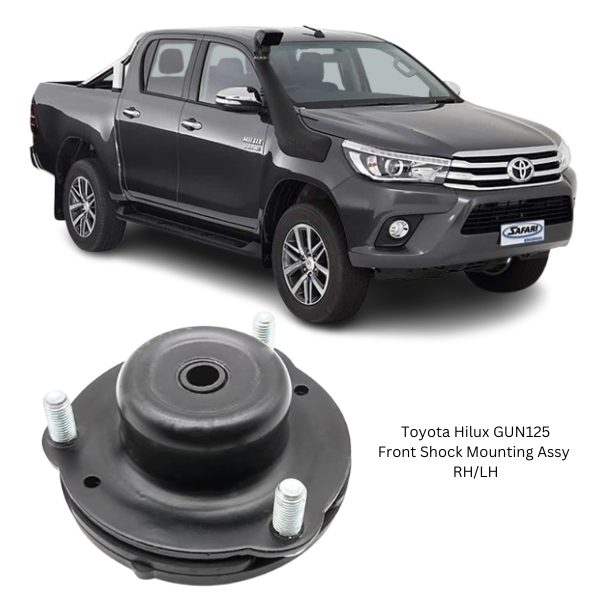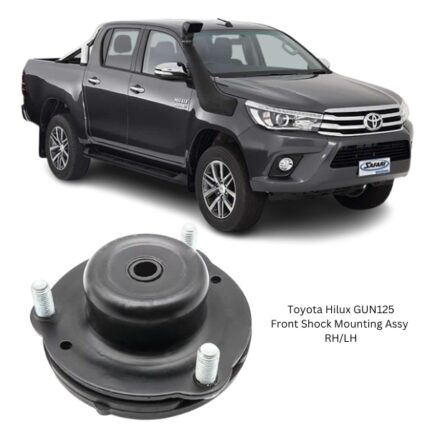Get Toyota Hilux GUN125 Front Shock Mounting Assy RH/LH 48609-0K040 in Kenya
The Front Shock Mounting Assembly RH/LH (Right-Hand/Left-Hand) plays a critical yet often understated role in the performance and comfort of a vehicle’s suspension system. Positioned at the uppermost point of the front suspension strut assembly, this component connects the shock absorber or strut to the vehicle’s chassis, serving both as a structural mount and a vibration insulator.
In MacPherson strut systems, commonly used in modern vehicles, the front shock mounting assembly is also integrated with a steering pivot bearing, making it a dual-function unit. This means it not only handles vertical suspension forces but also enables the strut to rotate with the steering input. Over time, the quality and condition of the shock mount can drastically affect ride quality, steering precision, noise levels, and even the lifespan of the suspension components.
Primary Functions
The Front Shock Mounting Assy RH/LH serves the following essential roles:
-
Support and Attachment
The assembly acts as a secure upper mounting point for the shock absorber or strut, fixing it to the vehicle’s body structure. It holds the shock in place during movement, ensuring structural integrity and alignment. -
Vibration and Noise Damping
It isolates the suspension from the chassis using a rubber or elastomeric insulator, helping to absorb minor road imperfections and vibrations that would otherwise be transmitted to the cabin. -
Steering Rotation Support
In strut-based systems, the mount includes a built-in bearing that allows the shock absorber to rotate as the wheels turn. This helps maintain smooth and accurate steering. -
Suspension Geometry Stability
A solid mount maintains proper suspension angles and geometry, contributing to effective tire contact and vehicle stability during braking, cornering, and driving on uneven terrain. -
Load Distribution
It distributes the load between the strut and the vehicle body, reducing the strain on suspension components and preventing premature wear or misalignment.
Structural Design and Composition
The RH (Right-Hand) and LH (Left-Hand) front shock mounting assemblies are mirror-image components, designed to suit each side of the vehicle. Although their basic construction is similar, they are not interchangeable due to differences in orientation, bolt patterns, or bearing direction.
Key Components:
-
Mounting Plate (Metal Bracket)
-
Typically constructed from stamped steel or cast aluminum.
-
Bolted directly to the vehicle’s strut tower using mounting studs.
-
Houses the rubber bushing and bearing insert.
-
-
Rubber Insulator or Bushing
-
Made of high-durability elastomer.
-
Provides cushioning between the chassis and strut.
-
Helps to dampen vibrations, bumps, and structural noise.
-
-
Strut Bearing (for MacPherson Struts)
-
Allows rotational movement of the strut in coordination with the steering system.
-
Often sealed and pre-lubricated for durability.
-
Essential for minimizing steering effort and noise.
-
-
Center Shaft Sleeve or Insert
-
Reinforced sleeve for mounting the shock absorber’s piston rod.
-
Allows for smooth articulation and shock movement.
-
-
Threaded Studs and Bushings
-
Used for secure bolting to the shock tower.
-
Precision-aligned to match manufacturer specifications for RH and LH sides.
-
Material Properties and Durability
To ensure optimal performance under demanding driving conditions, front shock mounting assemblies are manufactured with high-specification materials:
-
Steel or Aluminum Plate:
Offers rigidity and structural integrity while resisting corrosion and fatigue from vibration and environmental exposure. -
Rubber Insulators:
Formulated to withstand heat, oil, road salt, and ozone degradation. Over time, rubber may harden or crack, necessitating inspection and replacement. -
Polyurethane Alternatives:
Aftermarket upgrades may use polyurethane for increased durability and reduced deflection, often preferred in performance applications. -
Bearings:
Precision-made with low-friction surfaces, sealed to keep out dust, water, and debris. A worn bearing can severely impact steering feel and accuracy.
Signs of Wear and Failure
Because they handle both vertical suspension forces and rotational stress from steering, front shock mounts endure a lot of punishment and eventually wear out. When they degrade, various symptoms can appear:
-
Clunking or Banging Noises:
Most noticeable over speed bumps, potholes, or rough surfaces. Caused by excessive play in the mount. -
Vibration and Harshness:
Reduced damping capacity in the rubber insulator leads to vibrations and cabin noise. -
Steering Inconsistency or Stiffness:
A failing strut bearing in the mount may cause steering to feel sticky, heavy, or make groaning noises. -
Misalignment Issues:
When mounts become loose or distorted, they can impact suspension geometry, leading to uneven tire wear or handling instability. -
Visible Wear or Cracks:
Physical inspection may reveal perished rubber, rust, or a tilted strut position—especially after long-term use.
Installation and Replacement Tips
Replacing the Front Shock Mounting Assy RH/LH should be considered whenever the struts or shock absorbers are replaced, or if any of the failure signs are present.
Installation Steps Overview:
-
Secure the vehicle and remove the front wheels.
-
Support the suspension with a jack or stand.
-
Remove the strut assembly from the vehicle.
-
Use a spring compressor to safely disassemble the strut.
-
Replace the mount with the correct RH or LH part.
-
Reassemble the strut, install it back, and torque bolts to spec.
-
Perform a wheel alignment after installation.
Important: Incorrect installation or use of the wrong side mount (e.g., installing LH on RH) can lead to noise, premature wear, or steering misalignment.
OEM vs. Aftermarket Considerations
-
OEM Mounts:
Designed to meet original equipment standards for ride quality, durability, and steering precision. Suitable for standard driving conditions and factory-like performance. -
Aftermarket Upgrades:
Often made with stronger materials (like polyurethane or reinforced bearings) for improved handling, especially in performance or off-road environments. May increase noise and stiffness slightly.
Regardless of choice, the mount must match the vehicle’s make, model, year, and position (RH/LH) for proper fit and function.
Benefits of Replacing Worn Mounts
-
Enhanced Ride Comfort: Restores smoothness and reduces vibrations.
-
Improved Steering Precision: Ensures smooth turning and responsive handling.
-
Extended Strut Life: Prevents undue stress on the shock absorber piston rod and seals.
-
Reduced Suspension Noise: Eliminates clunks and rattles during operation.
-
Better Tire Performance: Maintains correct alignment and even tire wear.
Follow us on Facebook for more parts.





Reviews
Clear filtersThere are no reviews yet.